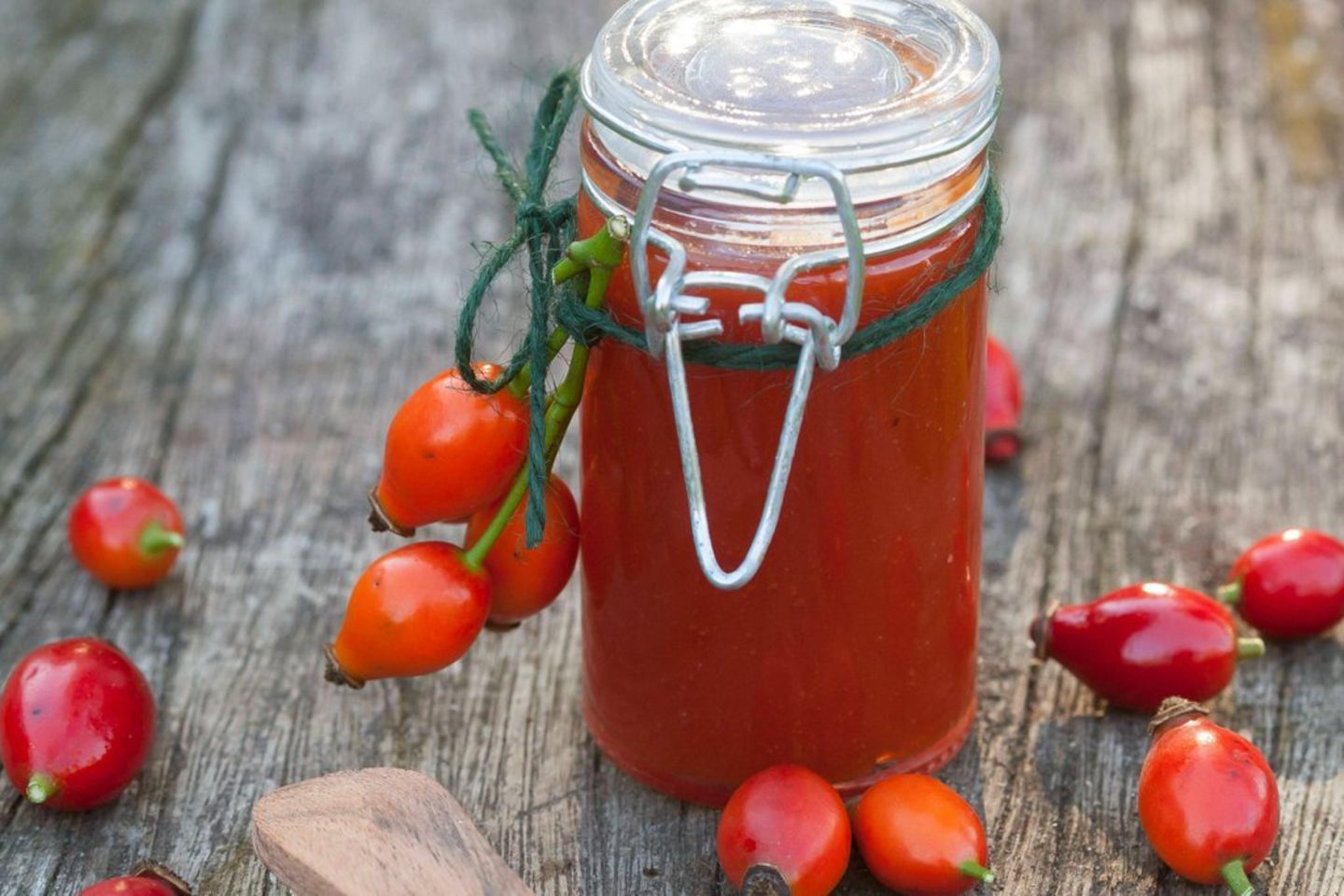Boiling and pickling
Aromatic treasures for the pantry
Rose hips are the non-toxic fruits of various types of roses – processed into jelly, the fruit is preserved.
© imago/blickwinkel
Autumn means cooking time: these fruits and vegetables are particularly suitable for preserving during the cold season.
As the season changes, various types of fruit and vegetables are particularly tasty in autumn. The perfect time to preserve the flavors of summer for the cold season. Preserving or pickling are tried and tested methods Preserving foods from the late summer harvest.
Summery flavors: preserving and pickling in autumn
Preserving summer vegetables and fruits is particularly worthwhile if you want to use the food harvested from your home garden. This is practical for your wallet and an environmentally friendly alternative because you can avoid imported products in winter.
In addition, own bottling enables creative taste experiences. In this way, different spices, herbs or vinegar can be used to add unique creations to the pantry that are tailored to your own culinary preferences.
Fruity to sour: These types of fruit are particularly popular
Not all fruits and vegetables are equally suitable for preservation. However, some varieties are particularly suitable for these purposes, for example apples. These are a good choice for making jam, chutney or compote. They are rich in fiber and offer an abundance of vitamins.
In Germany, various stone fruits can also be harvested in autumn, which are also suitable for preserving. These include plums, cherries and plums. Peaches are also good, whether for making jam or pickled. They score with a high content of vitamins A and C.
Berries such as strawberries, raspberries and blueberries are also perfect for making jams and jellies. The native rose hip is also interesting in autumn for home gardeners or those who know nature. Not only is it healthy, the sweet and sour fruits also provide a particularly high amount of vitamin C. Their vitamin C content is over 1000 milligrams per 100 grams, around 20 times higher than lemons.
Prefer spicy? Vegetables are also suitable for the preserving jar
The tomato is botanically classified as a fruit, but can be found in the vegetable department of almost every conventional supermarket. It is also a versatile food for cooking. Tomatoes can be processed into sauces, salsas and soups. The fleshy sun plants are not only tasty, they also provide plenty of lycopene. The plant substance is responsible for the red color of the tomato and, among other things, promotes energy metabolism in humans.
Zucchini or eggplant are often processed into pickled vegetables. What makes zucchini particularly valuable is its content of calcium, magnesium, iron and vitamin B1. However, both plants should be blanched before cooking so that the mixture does not become too mushy. Paprika is another vitamin bomb that can be used in various ways in the form of pickled pepper strips or as an ingredient in hot sauces. The vegetable is also rich in antioxidants.
Basically, almost any fruit or vegetable can be preserved. The few exceptions include watermelons, due to their high water content. Snake cucumbers can also only be processed to a limited extent as their many seeds can influence the taste. Leafy salads such as lettuce are generally not suitable either.
This is how preservation works: Hygiene is the be-all and end-all
When processing food, it is advisable to pay attention to the cooking time and temperature of a recipe. It can be helpful, especially for beginners, to follow the individual steps to ensure taste and shelf life. However, depending on your preferences and ingredients, individual information may vary.
A suitable mixture of acid, sugar and spices rounds off the result: acid from vinegar or lemon juice ensures longer shelf life and a balanced taste. Sugar, on the other hand, not only adds sweetness, but also has a preservative effect.
To ensure that a culinary experiment in a preserving jar does not spoil, it is important to pay attention to hygiene. Both the harvest and the jars must be thoroughly freed from bacteria. It is best to store finished jars in a place that is as cool and dark as possible.
